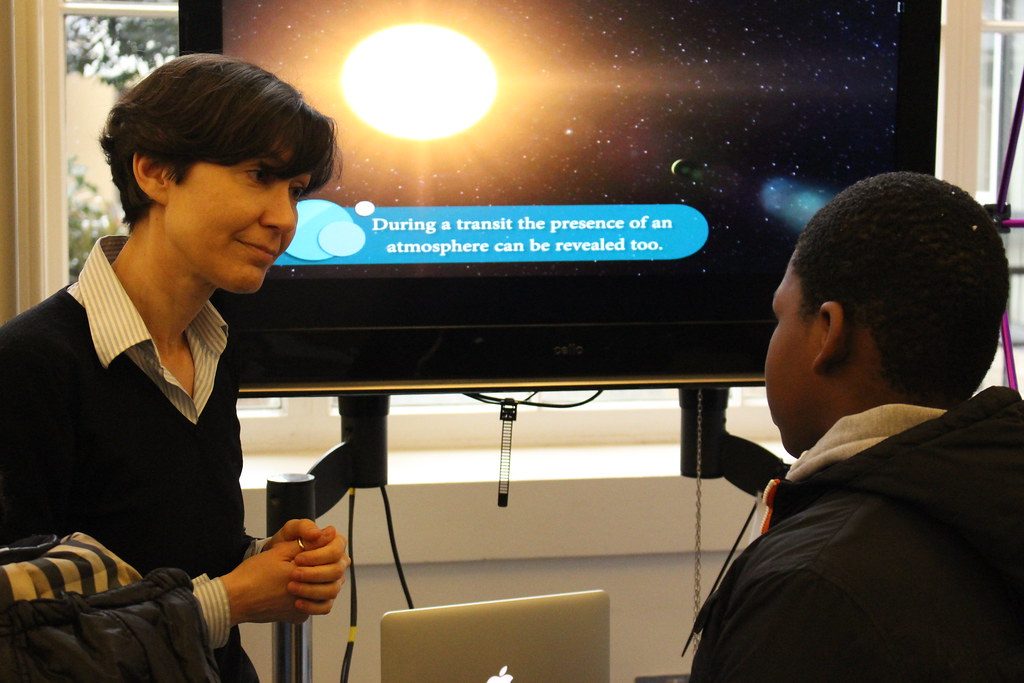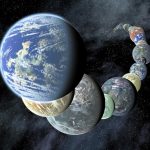A seminar by Giovanna Tinetti at UNITOV

Last Friday we had the honor to host a seminar by the P.I. of the ARIEL mission.
Giovanna Tinetti brilliantly presented why it is so important and challenging to discover and characterize the planets orbiting around starts other than the Sun.
“New Worlds in Our Galaxy” introduced the key questions that we have been asking since the discovery and the confirmation of the existence of the very first exoplanet. Is the Earth really unique? How these other planets formed? How is the weather like, there? Are they habitable?
HAW people at the Italian ARIEL meeting
 Dr. Daniele Galuzzo presented yesterday at the Italian ARIEL meeting our new model for exoplanet atmospheres. Based on a 3D General Circulation Model, it is able to derive the dynamical properties of the atmosphere. Furthermore we combined the GCM with a radiative transfer code so that our model give as as output high resolution spectrum of the planet, both reflected and thermal spectrum. We applied our model to the interesting case of the nearest exoplanet to Earth: Proxima Centauri b. We also proposed a photometric method for direct detection in the IR of the atmospheric features using JWST or ELT class groundbased telescopes.
Dr. Daniele Galuzzo presented yesterday at the Italian ARIEL meeting our new model for exoplanet atmospheres. Based on a 3D General Circulation Model, it is able to derive the dynamical properties of the atmosphere. Furthermore we combined the GCM with a radiative transfer code so that our model give as as output high resolution spectrum of the planet, both reflected and thermal spectrum. We applied our model to the interesting case of the nearest exoplanet to Earth: Proxima Centauri b. We also proposed a photometric method for direct detection in the IR of the atmospheric features using JWST or ELT class groundbased telescopes.
Second informal meeting about Exoplanets in UTOV
 The 15th of May 2018 we had a series of informal talks about exoplanets from a interdisciplinary point of view that included contributions from Departments of the University of Rome “Tor Vergata” (Physics, Mathematics and Biology) as well as the nearby IAPS and ISAC institutes, contributing on planetology and climate.
The 15th of May 2018 we had a series of informal talks about exoplanets from a interdisciplinary point of view that included contributions from Departments of the University of Rome “Tor Vergata” (Physics, Mathematics and Biology) as well as the nearby IAPS and ISAC institutes, contributing on planetology and climate.
ALL THESE WORLDS ARE YOURS…
One of the outstanding problems in current astrophysical research is identifying environments (in our solar system and beyond) that might be suitable for the appearance and evolution of life. Defining and recognizing habitability is a complex and highly multidisciplinary goal, that requires the convergence of a variety of expertises and includes many different research topics. A few of the questions which we need to answer along the way are: What makes the Earth habitable? How can we apply what we learned from Earth (and from unhabitable rocky planets in the solar system) to rocky planets around other stars? What is the role of the host star in making (or not) a planet habitable? Can there be a broader definition of habitability than the classical one based on the distance of a planet from its star? Does the overall environment in our galaxy have an impact on habitability? What is the evolution of climate and habitability on a terrestrial planet? How can we remotely detect evidence of habitability (and perhaps of life) on other planets?
To provide the proper context to look for an answer to these questions, we identify four major topics of research:
- Astrobiology
- Detection and characterization of transiting exoplanets
- Planet-star interaction
- Climate of terrestrial planets
